Public Administration IAS Mains Question Paper 2022:
There are Eight questions divided into Two Sections. Candidate has to attempt Five questions in all. Questions no. 1 and 5 are compulsory and out of the remaining, any Three are to be attempted choosing at least One question from each section.
| Public Administration IAS Mains Question Paper- I |
Section- A:
1:- Answer the following in about 150 words. (10 x 5 = 50)
(a) Public Management takes ‘what’ and ‘why’ from Public Administration and ‘how’ from Business Management. Elaborate.
(b) Every human organisation shall start from System-I and ultimately end up with System-IV. Comment on Likert’s statement.
(c) All tribunals are courts, but all courts are not tribunals. Explain.
(d) Classical Organisation Theory formed the bedrock for the modern organisation theories. Analyse.
(e) Interaction between the State and Civil society has hitherto been largely neglected, especially in developing countries. Examine.
2:- (a) ‘The administrative state is the creation of a power to bind us, with rules … that are not made by legislature.’ Discuss the constitutionality of the administrative state and its future. (20)
(b) Transformational leadership requires high degree of coordination, communication and cooperation. Explain. (15)
(c) Human relationists postulate that ‘what is important to a worker and what influences his/her productivity level may not be the organisational chart but his or her associations with other workers’. Is it more relevant today? (15)
3:- (a) Barnard posits the zone of indifference as the human condition that animates authority relationships and cooperation in modern organisations. Examine. (20)
(b) New public service celebrates what is distinctive, important and meaningful about public service. Discuss. (15)
(c) Strategic communication ought to be an agile management process. Discuss the conceptualization of strategic communication for the government actions. (15)
4:- (a) ‘Leadership is seen as dealing with change, whereas administration is viewed as coping with complexity.’ In this context, discuss the contextuality of leadership and administration for the success of organisations. (20)
(b) Regulatory governance frameworks have become essential building blocks of world society. Discuss their potential and impact in fulfilling the hopes and demands. (15)
(c) Social auditing is not just saving the money, it creates positive impact on governance. Comment. (15)
Section- B:
5:- Answer the following in about 150 words. (10 x 5 = 50)
(a) Development Administration ’embraces the array of new functions assumed by the developing countries’. Explain.
(b) Policy evaluation contributes fundamentally to sound public governance. Discuss.
(c) Weber’s construct of bureaucracy has served a great heuristic purpose in furthering research in the field of Comparative Public Administration. Do you agree with the statement? Give reasons.
(d) Standards are the foundation which do not replace regulations but complement them. Comment.
(e) ‘Outcome budgeting addresses the weaknesses of performance budgeting.’ Elaborate.
6:– (a) ‘The more exogenetic the process of diffraction, the more formalistic and heterogenous its prismatic phase; the more endogenetic the less formalistic and heterogenous.’ Examine this hypothesis of Riggs. (20)
(b) The environment and situational conditions under which the government operates have an important bearing on its human resource development practices. Examine. (15)
(c) ‘Lindblom regarded rational decision-making as an unattainable goal.’ In the light of the statement, suggest measures to avoid policy failures. (15)
7:- (a) The results of Washington Consensus were far from optimal for transitional economies. In this background, discuss the change of direction towards post-Washington Consensus. (20)
(b) A sound budgeting system is one which engenders trust among citizens that the government is listening to their concerns. Elaborate this in the context of budgetary governance. (15)
(c) Performance problems are rarely caused simply by lack of training and rarely can performance be improved by training alone. Critically analyse the statement. (15)
8:- (a) The audit function has always been viewed as an integral part of government financial management. Discuss the significance of internal audit in improving the performance of the government sector. (20)
(b) Most civil service regimes still equate ‘Public Sector Ethics’ with anti-corruption efforts. Discuss the insufficiency of Ethics-code in this background. (15)
(c) Failure of Public policies has often been attributed to problems of implementation, while implementors question the policy design. Discuss the contestation. (15)
| Public Administration IAS Mains Question Paper- II |
Section- A:
1:- Answer the following in about 150 words. (10 x 5 = 50)
(a) “Mughal administrative system was centralised despotism”. Comment.
(b) “The office of the District Collector admirably survived the changing times from colonialism to the present times”. Comment.
(c) “The smooth transaction of business in Ministries and Departments depends on the role played by Cabinet Secretariat”. Discuss.
(d) “The Government of India Act, 1935 is the most important source of Indian constitution”. Identify its features.
(e) “The Chief Secretary is the chief communication link between the state and central government”. Explain.
2:- (a) “The Indian federal structure is largely symmetric albeit with some asymmetric features”. Examine the status of States and Union Territories through the principle of weighted and differentiated equality in India. (20)
(b) The Atmanirbhar Bharat Abhiyaan is a progressive policy. Analyse. (20)
(c) “Indicative Planning, is a middle path of planning and market mechanism to ensure coordination between public and private activities.” Explain. (10)
3:- (a) “The New Economic Reforms during the past three decades have not only reduced the scope of industrial licensing and areas reserved exclusively for Public Sector but also infringed the autonomy of existing public sector undertakings”. Examine. (20)
(b) “National Institution for Transforming India (NITI) Ayog has become super cabinet in formulating the development agenda of our country”. Examine the statement by giving suitable examples. (20)
(c) Despite the constitutional status, the District planning committees remained a non-entity in preparation and implementation of plans. Discuss. (10)
4:- (a) “The Indian judicial system has failed to deliver justice expeditiously”. Examine the challenges faced by the judiciary and suggest measures to overcome them. (20)
(b) Analyse the specific areas of controversies with regard to Union-State financial relations, particularly in the context of one nation – one tax policy. (20)
(c) Examine the role of central government in adjudication of disputes relating to water of interstate rivers. (10)
Section- B:
5:- Answer the following in about 150 words. (10 x 5 = 50)
(a) Examine the lateral entry recruitment in government in the context of Part XIV of the Indian Constitution.
(b) Examine the role of Securities and Exchange Board of India (SEBI) in protecting the interests of the investors in securities.
(c) Citizens charters in India have not succeeded in their objectives in making administrative system citizen centric. Do you agree? Give reasons.
(d) Following the onset of globalisation, the traditional bureaucratic model appears to have lost its significance. Comment.
(e) “The financial suitability of the Urban local bodies can become a reality only when they receive their due share of public finances.” Explain
6:- (a) The recommendations of National Finance Commissions are more norms based than the need based. In the light of this statement analyse the terms of references of 15th National Finance Commission. (20)
(b) “The objective of Mission Karmyogi is to enhance capacity building of Indian Civil Servants and improve governance.” Discuss. (20)
(c) Parliamentary control over administration is no substitute for judicial control. Comment. (10)
7:- (a) In India, for the upliftment of majority of people, governmental intervention remains a central fact of life. Nevertheless, the effective implementation of policies depends on the ethical values of Public Servants. Discuss. (20)
(b) Comptroller and Auditor General (CAG) is today a primary cause of widespread and paralysing unwillingness on the part of government institutions to decide and act. Discuss. (20)
(c) Do you think that the new localism relegate the spirit of 74th Constitutional Amendment Act, 1992? (10)
8:- (a) The main objective of Panchayats (Extension to Scheduled Areas) Act, 1996 is to enable tribal society to assume control over their livelihoods and traditional rights. Critically examine the implementation of the Act. (20)
(b) The effectiveness of law and order administration depends on cooperative attitudes of people towards police, than bringing reforms in the structure and procedures of law and order machinery. Do you agree? Give reasons. (20)
(c) Examine the role of Lokpal in ensuring transparency and accountability in Indian administration. (10)

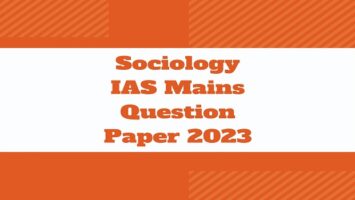


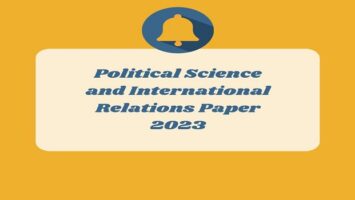
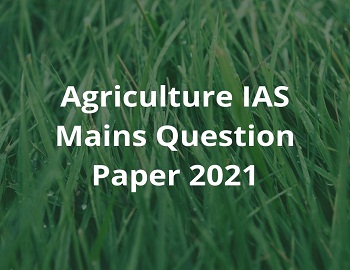
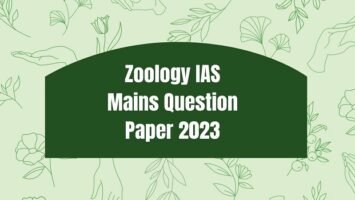
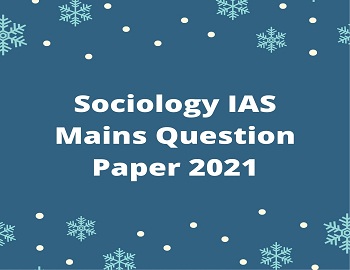
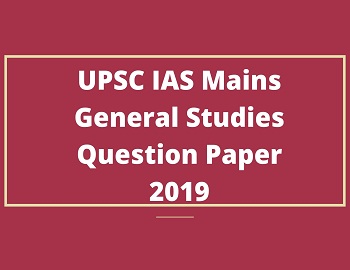
Comments (No)